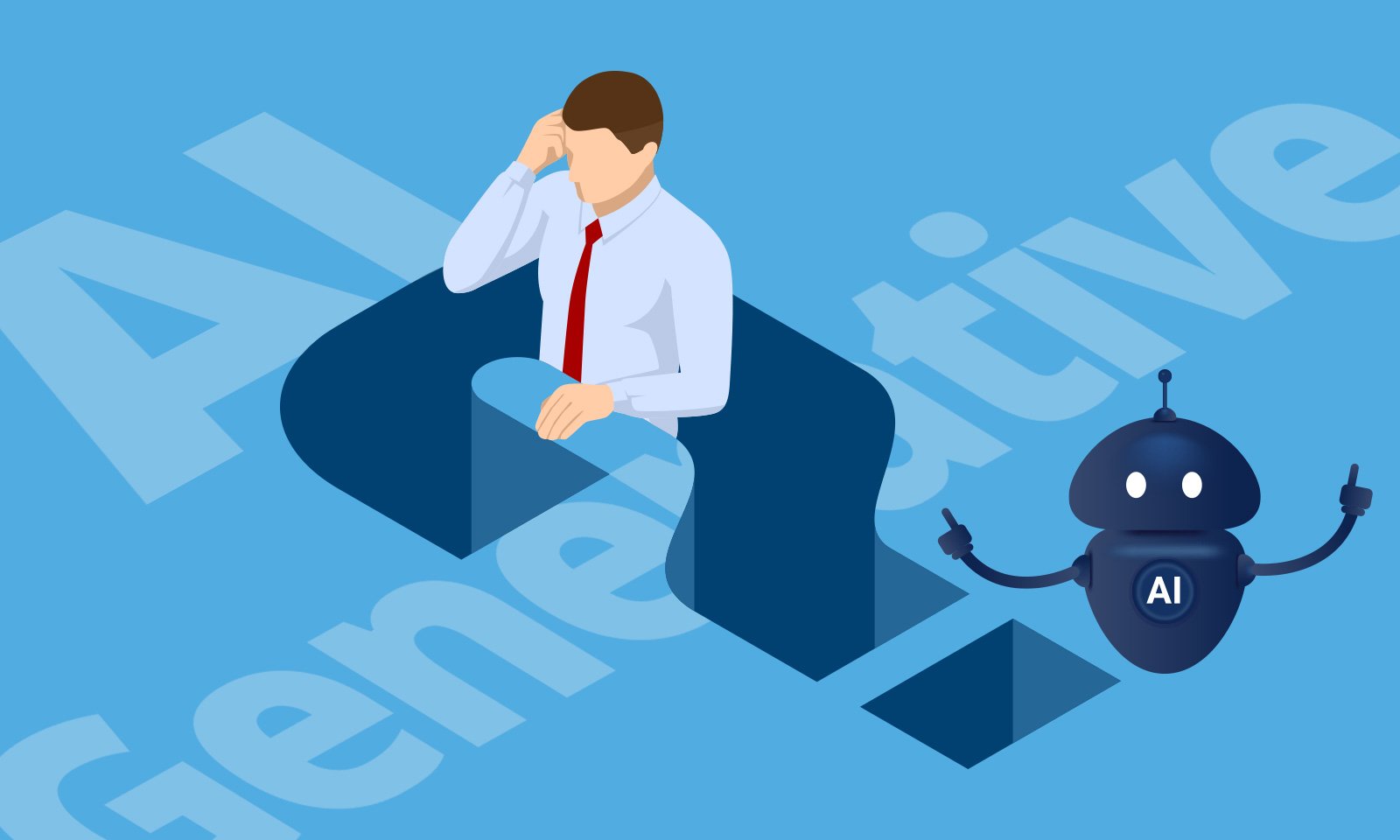The field of artificial intelligence (AI) is expansive, with multiple branches like machine learning, computer vision, natural language processing, and most recently, generative AI taking center stage. Generative AI, which creates content such as text, images, code, music, and more, is not just a technological breakthrough—it’s a catalyst for digital transformation across industries.
But where exactly does generative AI development fit in the broader AI lifecycle? Understanding this is essential for businesses and developers looking to implement AI strategically, efficiently, and ethically.
In this blog, we’ll explore the full AI lifecycle and pinpoint how generative AI development integrates into each stage—from problem definition to production deployment and beyond. We’ll also uncover the challenges, best practices, and tools associated with generative AI at different phases.
1. Overview of the AI Lifecycle
The AI lifecycle refers to the complete end-to-end process of building, deploying, monitoring, and refining AI systems. It typically includes the following phases:
-
Problem Definition
-
Data Collection & Preparation
-
Model Selection
-
Model Training & Evaluation
-
Deployment
-
Monitoring & Maintenance
-
Feedback & Iteration
Each stage contributes to building AI systems that are accurate, scalable, and aligned with business goals. Generative AI development can be integrated into several of these phases depending on the use case and objectives.
2. Problem Definition: Identifying Generative Opportunities
Generative AI development begins with a clear understanding of what the model is expected to generate—be it natural language content, product designs, images, code, or audio.
Key Activities:
-
Define the business or user need (e.g., automated content writing, image generation).
-
Assess whether a generative AI model is the right solution.
-
Identify the type of model required: LLMs for text, diffusion models for images, transformers for code/music.
Where Generative AI Fits:
This is the strategic phase where decision-makers assess if the use of generative models can solve a problem more creatively or efficiently than traditional AI or manual methods.
3. Data Collection & Preparation
Generative AI models are data-hungry. Their performance depends heavily on the quality, variety, and volume of training data.
Key Activities:
-
Gather datasets relevant to the content you want to generate.
-
Clean, preprocess, and label the data.
-
Ensure ethical sourcing and remove bias (e.g., gender, race, political slant).
Generative AI-Specific Considerations:
-
Use curated datasets like Common Crawl, The Pile, or open-source datasets (e.g., LAION for images).
-
For enterprise solutions, internal data (e.g., documents, chats, code) may need vectorization and embedding.
-
Privacy and copyright compliance are crucial in this stage.
4. Model Selection and Architecture Design
Generative AI development differs from traditional AI in model selection. Instead of classification or regression models, you’re working with transformer-based or diffusion-based architectures.
Common Generative Models:
-
Text: GPT, Claude, LLaMA, Gemini, Mistral
-
Image: DALL·E, Stable Diffusion, Midjourney
-
Audio: Jukebox, AudioLM
-
Code: CodeGen, Copilot
-
Multimodal: GPT-4o, Gemini 1.5, Claude 3.5 Sonnet
Customization Options:
-
Use pre-trained foundation models
-
Fine-tune models with domain-specific data
-
Train from scratch (only for advanced, resource-rich projects)
Where Generative AI Fits:
This is the heart of generative AI development—selecting or designing models capable of producing high-quality, creative outputs based on learned patterns.
5. Model Training & Evaluation
This phase involves training the model with your data and testing its generative capabilities.
Key Activities:
-
Fine-tune with supervised, reinforcement learning (RLHF), or unsupervised techniques.
-
Use prompt engineering to guide output quality.
-
Evaluate outputs using metrics like BLEU (text), FID (images), or human review for subjective tasks.
Tools & Platforms:
-
Hugging Face Transformers
-
OpenAI API Playground
-
Google Vertex AI
-
Amazon SageMaker
-
Weights & Biases for experiment tracking
Challenges:
-
Requires significant computational power (especially for large models).
-
Difficulty in evaluating creativity and subjective quality.
-
Need for alignment with human values and context.
6. Deployment: Bringing Generative AI to Production
After training, the generative AI model must be integrated into applications or platforms for real-world use.
Deployment Options:
-
Use APIs (e.g., OpenAI, Cohere, Anthropic)
-
Host models on cloud platforms (AWS, Azure, GCP)
-
Deploy using containers or serverless functions
-
Integrate with chat interfaces, mobile apps, or websites
Considerations:
-
Cost optimization (API usage, GPU costs)
-
Latency and speed of generation
-
Real-time vs. batch generation
-
Security and access control
Example Use Cases:
-
AI writing assistants for marketing teams
-
Image generators for e-commerce product designs
-
Personalized code generation for SaaS platforms
7. Monitoring, Evaluation, and Iteration
Generative AI must be constantly monitored to ensure its outputs remain relevant, safe, and aligned with user expectations.
Monitoring Metrics:
-
Output relevance and coherence
-
Prompt effectiveness
-
User feedback and engagement
-
Abuse detection and content safety
Continuous Improvement:
-
A/B testing with different prompts or model versions
-
Fine-tuning with user-submitted data
-
Updating moderation filters and ethical constraints
Tools:
-
Human feedback systems
-
Drift detection systems
-
Prompt optimization dashboards
8. Ethical & Regulatory Considerations
As generative AI becomes more powerful, so do the ethical concerns:
-
Bias and misinformation
-
Copyright violations
-
Synthetic content misuse (deepfakes, fake news)
-
Transparency in AI usage (AI-generated disclosures)
Regulations like the EU AI Act, US Executive Orders, and India’s Digital India AI policy now mandate guidelines for safety, fairness, and explainability.
Startups and enterprises must embed responsible AI practices across the lifecycle—from dataset curation to output moderation and disclosure.
9. Generative AI Lifecycle in Action: Real-World Examples
a. ChatGPT (OpenAI)
-
Data: Web content, books, code
-
Model: GPT-4, trained on large-scale datasets
-
Deployment: API, web app, mobile apps
-
Monitoring: Moderation filters, user feedback loops
b. Canva’s Magic Design
-
Problem: Automating design creation
-
Model: Diffusion and transformer-based models
-
Integration: Embedded into Canva’s editor
-
Impact: Rapid scaling of personalized visual content
c. GitHub Copilot
-
Training: Trained on public code repositories
-
Model: OpenAI Codex
-
Function: Assists developers with code generation
-
Lifecycle Fit: Real-time deployment, continuous fine-tuning
Conclusion
Generative AI development is not a standalone initiative—it is deeply embedded in the AI lifecycle. From data preparation and model training to deployment and refinement, each phase plays a critical role in ensuring your generative AI solution is effective, scalable, and responsible.
Understanding where generative AI fits allows developers, startups, and enterprises to:
-
Maximize innovation
-
Reduce time-to-market
-
Ensure regulatory compliance
-
Drive meaningful business outcomes
Whether you’re building a chatbot, content generator, or synthetic media tool, anchoring your development in the full AI lifecycle ensures long-term success.



